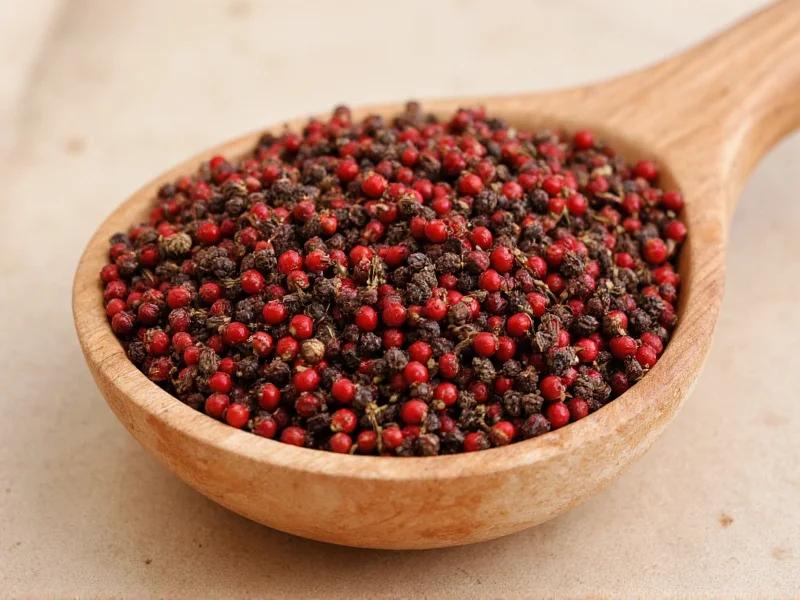When you're searching for a sichuan pepper alternative, you're likely facing a common culinary challenge: that distinctive tingling sensation and citrusy aroma are hard to replicate. Sichuan peppercorns (Huājiāo) aren't actually peppers but the dried husks of Zanthoxylum plant berries, delivering a unique numbing effect called má that's essential to authentic Sichuan cuisine.
Understanding why finding a suitable szechuan pepper replacement is challenging requires knowing what makes Sichuan peppercorns special. Unlike chili peppers that activate heat receptors, Sichuan peppercorns trigger vibration receptors at 50 hertz, creating that signature tingling sensation. The best substitutes address both the flavor profile (citrusy, floral, slightly woody) and the physical sensation.
Top Sichuan Pepper Alternatives Ranked
Not all substitutes work equally well for every recipe. Your choice depends on whether you need the numbing effect, the flavor, or both. Here's how the top options compare:
| Alternative | Best For | Ratio to Replace | Key Characteristics |
|---|---|---|---|
| Sansho Pepper | Japanese dishes, numbing effect | 1:1 | Milder numbing sensation, citrus notes |
| Black Pepper + Coriander | Most Western recipes | 1:½ + 1:½ | Heat without numbing, earthy-citrus blend |
| Tellicherry Peppercorns | Robust dishes, bold flavor | 1:¾ | Complex heat, less citrus, no numbing |
| Aleppo Pepper | Mediterranean fusion dishes | 1:1 | Moderate heat, fruity notes, no numbing |
| Allspice + Black Pepper | Baking, non-spicy applications | 1:⅓ + 1:⅔ | Warm spice profile, no numbing |
Detailed Alternative Breakdown
Sansho Pepper: The Closest Relative
Sansho pepper (Zanthoxylum piperitum) is the closest botanical relative to Sichuan pepper and delivers a similar numbing sensation, though milder. This Japanese alternative works particularly well in dishes where the tingling sensation is crucial. Use it in a 1:1 ratio, but note it has more citrus notes and less floral complexity than authentic Sichuan peppercorns. For sichuan peppercorn substitute for ma la dishes, sansho provides the essential numbing quality but lacks the full flavor depth.
Black Pepper and Coriander Blend: Most Accessible Option
When sansho isn't available, a 50/50 blend of freshly ground black pepper and coriander seeds offers the most practical sichuan pepper substitute for recipes. The black pepper provides heat while coriander contributes citrus notes. Toast both spices lightly before grinding for maximum flavor. This combination works well in stir-fries and marinades but won't replicate the numbing sensation. Use equal parts by volume to replace Sichuan peppercorns.
Tellicherry Peppercorns: Bold Flavor Alternative
Tellicherry peppercorns, harvested at full maturity, offer complex flavor notes including citrus, floral, and woody elements similar to Sichuan pepper. While they lack the numbing quality, their nuanced profile makes them excellent for dishes where flavor complexity matters more than the tingling sensation. Use ¾ teaspoon Tellicherry for every teaspoon of Sichuan peppercorns. This best alternative to sichuan peppercorns shines in dry-rubbed meats and spice blends.
Regional Substitutions Based on Availability
Your location affects which alternatives make practical sense. In North America, sansho pepper is increasingly available in Asian markets. In Europe, Tellicherry peppercorns are more accessible. For those seeking a non-spicy sichuan pepper alternative, consider:
- Mexico/Latin America: Use aji amarillo powder with black pepper for citrusy heat
- India: Try a blend of black pepper and kalonji (nigella seeds) for complexity
- Middle East: Sumac with black pepper provides citrus notes without numbing
What NOT to Use as Substitutes
Avoid these common but ineffective substitutions that create flavor imbalances:
- Chili powder (adds heat without citrus notes)
- White pepper alone (too sharp, lacks complexity)
- Cayenne pepper (overwhelming heat, wrong flavor profile)
- Regular花椒 (Chinese prickly ash) from non-authentic sources (often mislabeled)
These options fail as szechuan pepper replacement options because they emphasize heat over the nuanced citrus-floral profile that defines authentic Sichuan cuisine.
Creating a Multi-Dimensional Substitute
For the most authentic results, create a custom blend that addresses multiple flavor dimensions. Try this combination for 1 teaspoon of Sichuan peppercorns:
- ½ teaspoon freshly ground Tellicherry peppercorns
- ¼ teaspoon ground coriander
- ⅛ teaspoon ground cassia bark (or cinnamon)
- Pinch of ground star anise
This homemade sichuan pepper alternative captures the citrus notes, warmth, and subtle sweetness of authentic Sichuan peppercorns. Toast the whole spices before grinding for maximum flavor release. The cassia bark and star anise contribute to the complex aroma profile without overwhelming the dish.
Where to Source Authentic Sichuan Pepper
Before settling for alternatives, consider these sourcing options:
- Specialty spice retailers (Penzey's, The Spice House)
- Online Chinese grocery stores (Weee!, Yamibuy)
- Asian markets (look for red-brown husks, not black seeds)
- Reputable Amazon sellers with recent harvest dates
When purchasing, check for vibrant color and strong citrus aroma. Avoid pre-ground versions, as the volatile compounds responsible for the numbing sensation dissipate quickly. Properly stored in an airtight container away from light, whole Sichuan peppercorns maintain quality for 6-12 months.
Using Alternatives in Specific Dishes
Different recipes require different substitution approaches:
- Mapo tofu: Use sansho pepper for numbing effect, plus extra chili oil for heat
- Kung pao chicken: Black pepper and coriander blend works well with the peanuts
- Dry-fried dishes: Tellicherry peppercorns provide necessary boldness
- Marinades: Allspice and black pepper combination penetrates proteins effectively
Remember that no substitute perfectly replicates authentic Sichuan peppercorns, but understanding your recipe's requirements helps select the most appropriate what can i use instead of sichuan pepper option.











 浙公网安备
33010002000092号
浙公网安备
33010002000092号 浙B2-20120091-4
浙B2-20120091-4